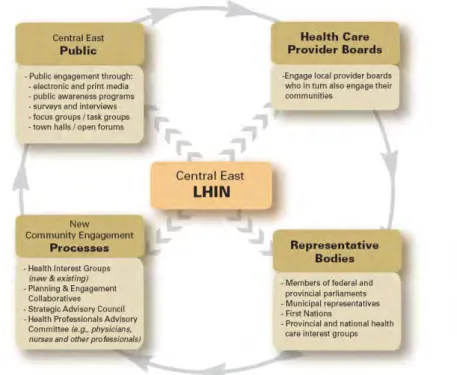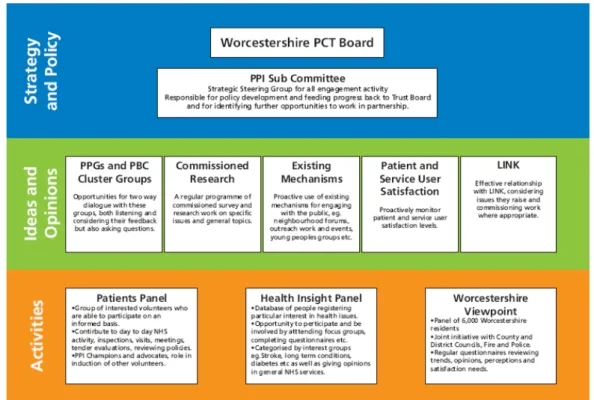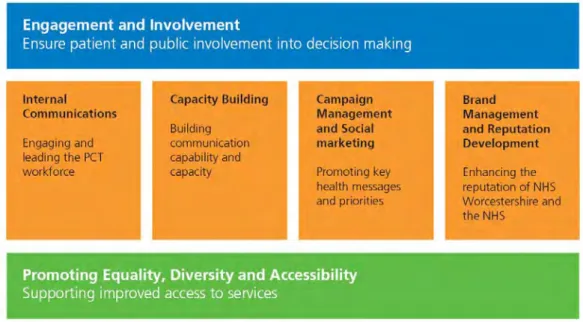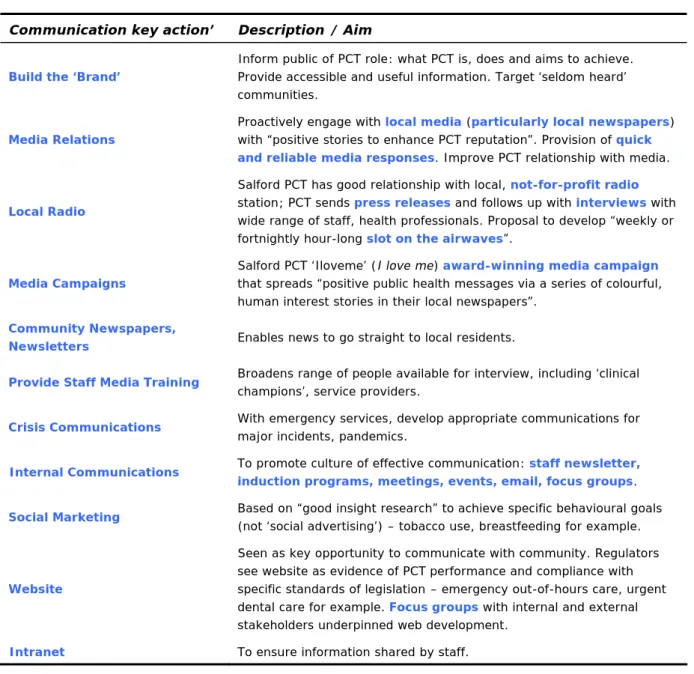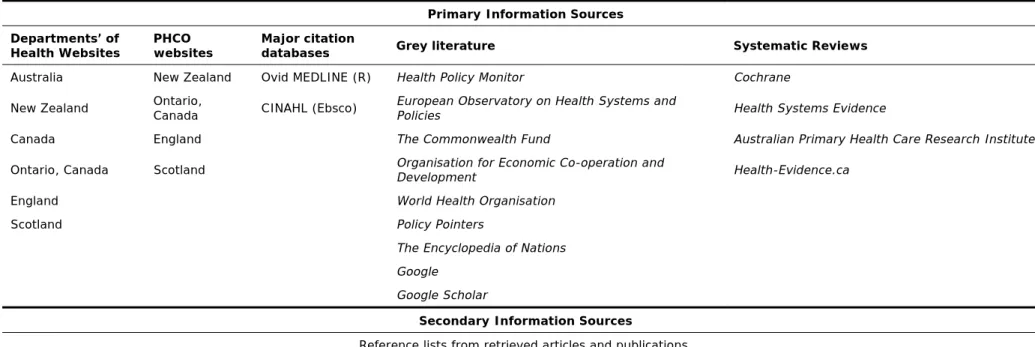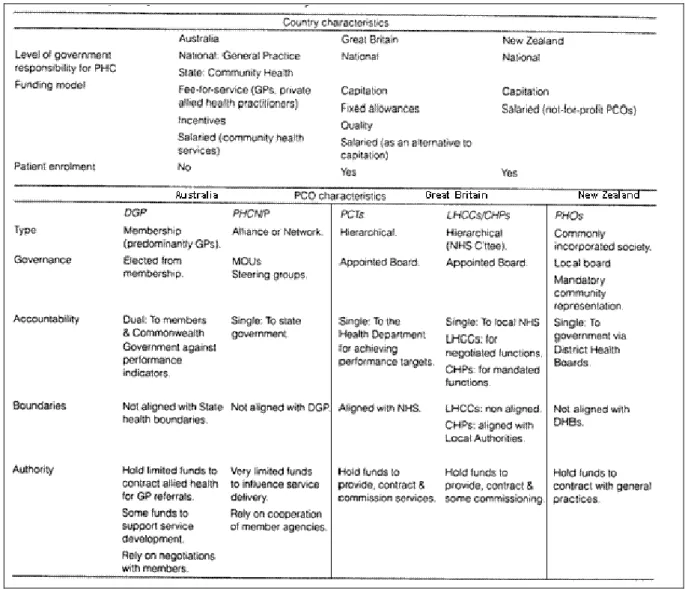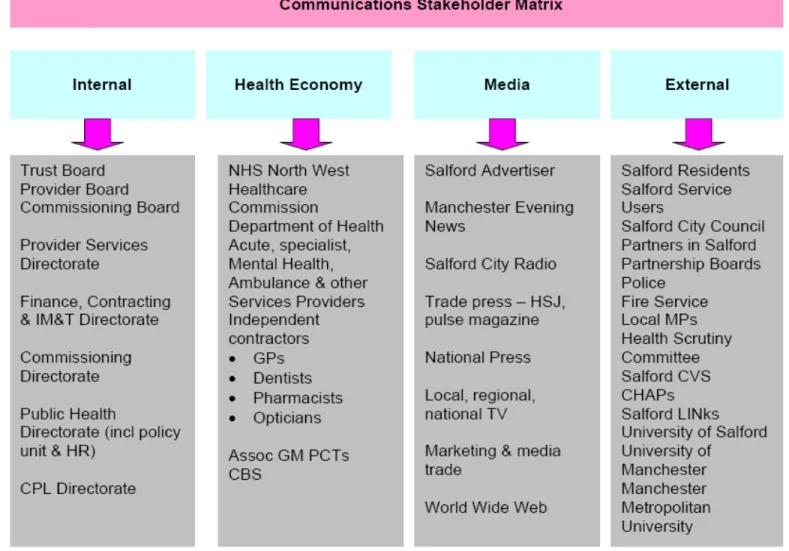Local community reporting models for regional primary care organizations i Box: Tools and Frameworks Index. This Policy Issues Review examined information on models of regional primary health care organizations that report to local communities. Community reporting models used by primary health care organizations (PHCOs) in New Zealand, Canada (Ontario), England and Scotland were reviewed.
All countries were involved in receiving information from the community to inform decisions about the planning, design and delivery of health services. Although there is evidence of information transfer from the community to the PHCO, there appears to be little reciprocity. Primary Health Care Organizations: “intermediate level structures that sit between government and local primary health care providers”.
After a brief overview of primary health care organizations (PHCOs), their evolution in Australia, and a discussion of the importance of community participation in health care, the structure, functions and reporting mechanisms of these organizations as undertaken in New Zealand, Canada (Ontario) are discussed. ), England and Scotland are reported. The 2001 Primary Health Care Strategy document outlined six new directions for primary health care in New Zealand.24 The first was “working with local communities and enrolled populations”. Primary health organizations will need to include some community members on their governing bodies.
Indeed, respondents indicated that they encountered difficulties engaging with the community.26 The authors concluded that there is a “fundamental tension inherent in the PHO board model – the requirement that both community and provider interests be represented.”26.
Ministry website updates
The Local Health System Integration Act (2006)71 states that 'community' includes, in relation to a local health integration network that includes the community,. a) patients and other individuals in the geographical area of the network. The law71 also states that the methods of implementing community involvement "may include the organization of community meetings or meetings of target groups or the establishment of advisory committees". The Department of Health and Long-Term Care website provides a link to a toolkit72 that defines 'community engagement' as 'involving health care members/stakeholders.
Local networks for health inclusion aim to "work together with community voices".65 In order to best meet local needs and priorities, networks have been developed in consultation with the community ("the general public, patients, advocates, health services – all who had something to say").66 Family health teams were assembled through a process of open communication. The Health Outcomes Team believes that consultation with stakeholders and communities is "essential to building the trust and support that will sustain the transformation for years to come". During this period, the Health Outcomes Team implemented several communication strategies to engage the community:65.
Community workshops
In each LHIN, self-identified leaders worked with other volunteers to coordinate the integration process. The Ministry organized a Community Planning Forum, attended by 200 people, to engage communities and detail the process of preparing the Integration Priority Report.
Community dialogues
Action groups
Working groups
Components of Central East's resource were used in the Ministry's Toolkit document to demonstrate potential approaches to community engagement for other LHINs.72 The relationships between the community, healthcare provider boards and governing bodies, and the tools they planned to use for community engagement to promote, was figuratively depicted within the Central East document (Figure 1). A document entitled Health Care Matters was produced by the Erie St Clair LHIN.75 This 2006 publication reflects the importance Council places on community involvement and details their proposed strategy (Figure 2). This table shares similarities with the figure found in the Central East LHIN publication, A Framework for Community Engagement & Local Health Planning (Figure 1).74.
A 2009 report made several recommendations on strategies to be implemented to promote a culture of community engagement within LHINs:76.
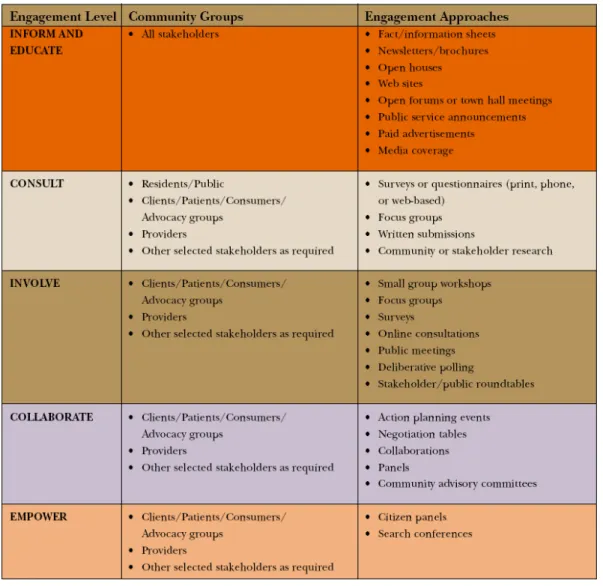
Ministry of Health and long-term care
LHINs
The PCG role was as an advisor to a local health authority, but by April 2002, to better enable the integration of services, Groups had evolved into Primary Care Trusts (PCTs) - "the cornerstone[s] of the local NHS". 83 At the same time, the 95 English health authorities were replaced by 28 Strategic Health Authorities (SHAs).60 During this transition, the Shifting the Balance of Power strategy began.84 The accompanying cultural and organizational changes included a greater emphasis on patients to become "informed and active partners in their care involving them in the design, delivery and development of local services".84 PCTs "purchase health services to suit local needs", but may also directly provide certain primary and community care services.85 There are 392 English NHS trusts:86 Local democratic legitimacy in health95 – the role of Local Authorities, Health and Wellbeing Boards, HealthWatch Patient involvement has been defined as “the full participation of patients and their carers in their own care and treatment.
Public involvement included "the participation of members of the public or their representatives in decisions about the planning, design and development of their local health services".101 Of the 12 projects presented in the report, six focused on patient and carer involvement, four investigated public involvement and two targeted education and training. A new performance monitoring system is planned – the NHS Results Framework, monitored by the NHS Commissioning Board.87 The Board will “provide leadership for quality improvement through commissioning” and, among other responsibilities, “will lead in improving quality and promoting patient involvement and choice", and "address inequities in access to health care".87 This should be achieved by "championing the interests of the patient rather than the interests of particular providers".87 The framework Clinically focused outcomes will monitor three aspects of quality of care. :87. Citizen juries, a form of "deliberative democracy," may also be useful.137 Colleges of 12 to 16 citizens are recruited from organizations that have "the power to act on their [citizens' jury].
While the initial intentions were well intentioned, a "rhetoric of partnership and community engagement" and a focus on "the poverty of places rather than people" followed. Patient focus and public engagement: NHS Scotland, http://www.scotland.gov.uk/Resource/Doc pdf.
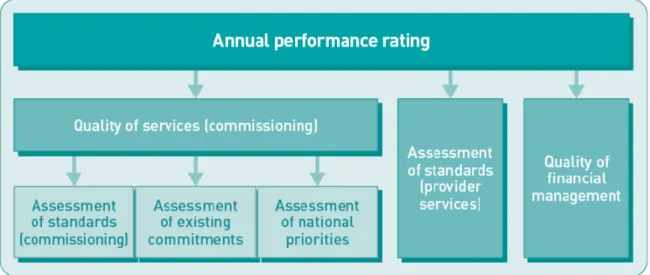
Methods
Roles of international primary health care organisations
Deliver public health through – community development, service planning, health promotion, health education, commissioning, occupational health and performance management. Promote equality and work in partnership with local authorities;92 adult social services, early years services and public health. Improve health of local communities – tackle inequalities, address poverty, deprivation by working with community planning frameworks.
Summary of key characteristics of Australian, New Zealand and Great Britain’s
Strong consumer leadership Shared vision and agreed outcomes Organization-wide commitment Supports participation for consumers who have health. Make sure the benefits of participation are visible Reimbursement for customer representatives Find common ground when identifying solutions Good communication Use customer 'champions' as catalysts for change.
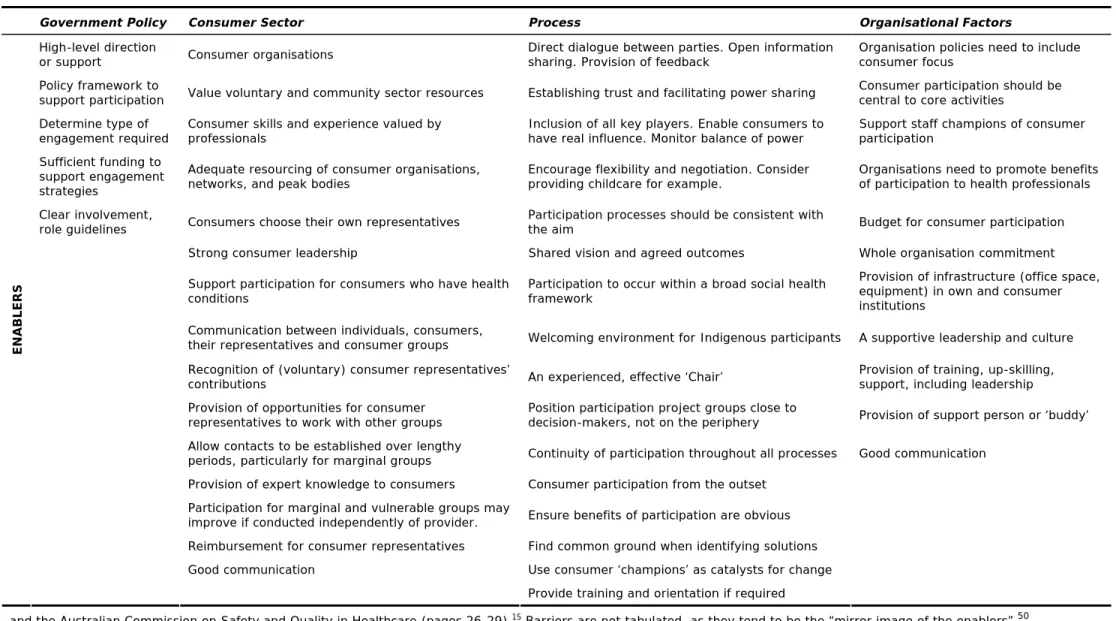
Salford PCT Communication Stakeholder Matrix
